27 Sep Downloadable Disability Access Symbols
The twelve symbols below promote and publicize accessibility for people with disabilities.
There are over 54 million citizens with disabilities who want and need access to work and the buildings in which people work. Apart from all ethical considerations, the law demands that people with disabilities are accommodated.
These symbols advertise your accessibility to employees, customers, audiences, and anyone else who needs access to your building or offices. Examples of places you’ll want to promote your accessibility include: advertisements, newsletters, conference and program brochures, membership forms, building signage, floor plans and maps.
Any copy accompanying the symbols should focus on the accommodation or service, not on who uses it. For example, “Ramped Entrance” may accompany the wheelchair symbol. This is important because, not only do individuals in wheelchairs use ramps, but so do people with baby carriages, luggage, packages, etc. Language that fosters dignity is important too. For example, “Reserved Parking” or “Accessible Parking” may be used with the wheelchair symbol to indicate parking spaces designated for people with disabilities.
To Download the Complete Set:
CLICK HERE to download a ZIP file containing the complete set of the symbols in AI, EPS and JPG formats.
Access (Other Than Print or Braille) for Individuals Who Are Blind or Have Low Vision
This symbol indicates access for people who are blind or have low vision, best used in places such as: a guided tour, a path to a nature trail or a scent garden in a park; and a tactile tour or a museum exhibition that may be touched.
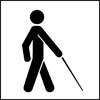
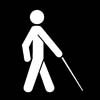
Symbol for Wheelchair Accessibility
The wheelchair symbol indicates access for individuals with limited mobility,
including wheelchair users. Remember that a ramped entrance is not completely accessible if there are no curb cuts, and an elevator is not accessible if it can only be reached via steps.
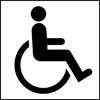
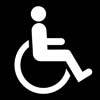
Audio Description
Blind or low vision people may enjoy performing arts, visual arts, television, video, and film that offers live commentary or narration (via headphones and a small transmitter) of visual elements provided by a trained Audio Describer.
An adapter for non-stereo TVs is available through the American Foundation for the Blind, (800) 829-0500.
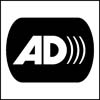
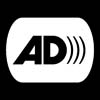
Telephone Typewriter (TTY)
This device is also known as a text telephone (TT), or telecommunications device for the deaf (TDD). TTY indicates the presence of a device used with the telephone for communication with and between deaf, hard of hearing, speech impaired and/or hearing, persons.
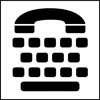
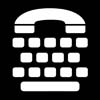
Volume Control Telephone
This symbol indicates the presence of telephones that have handsets with amplified sound and/or adjustable volume controls.
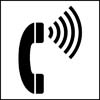
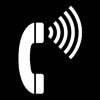
Assistive Listening Systems
These systems transmit amplified sound via hearing aids, headsets or other devices.

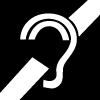
Sign Language Interpretation
The symbol indicates that Sign Language Interpretation is provided for a lecture, tour, film, performance, conference or other program.
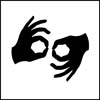
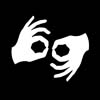
Accessible Print (18 pt. or Larger)
Large print is indicated by the words: “Large Print,” printed in 18 pt. or larger text. In addition to identifying large print versions of books, pamphlets, museum guides and theater programs, you may use the symbol on conference or membership forms with large print. Sans serif or modified serif print with high contrast is important, and special attention should be paid to letter and word spacing.


The Information Symbol
Knowing where to find what you need is almost as valuable as finding it. The information symbol indicates the location for specific information or materials concerning access, such as “LARGE PRINT” materials, audio cassette recordings of materials, or sign interpreted tours.
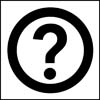
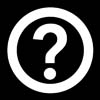
Closed Captioning (CC)
Closed Captioning (CC) (commonly known as subtitles) enables people who are deaf or hard of hearing to read a transcript of the audio portion of a video, film, exhibition or other presentation. As the video plays, text captions transcribe (although not always verbatim) speech and other relevant sounds.
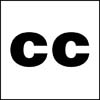
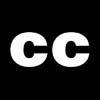
Opened Captioning (OC)
This symbol indicates that captions, which translate dialogue and other sounds in print, are displayed on the videotape, movie, television program or exhibit audio. Open Captioning is preferred by many, including deaf and hard-of-hearing individuals, and people whose second language is English. It also helps teach children how to read and keep sound levels to a minimum in museums and restaurants.
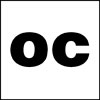
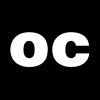
Braille Symbol
This symbol indicates that printed material is available in Braille, including exhibition labeling, publications and signage.
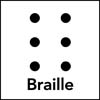
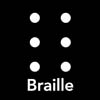
The Disability Access Symbols were produced by the Graphic Artists Guild Foundation with support and technical assistance from the Office for Special Constituencies, National Endowment for the Arts.
Special thanks to the National Endowment for the Arts.
Graphic design assistance by the Society of Environmental Graphic Design.
Consultant: Jacqueline Ann Clipsham
